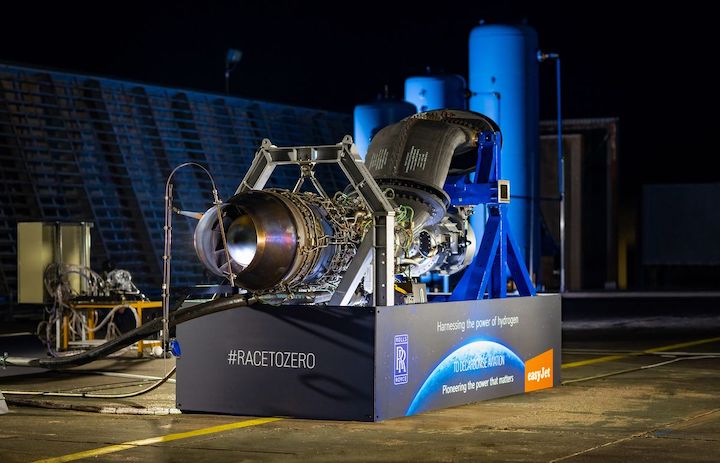Rolls-Royce Holdings Plc said it used hydrogen fuel to successfully power a modern aircraft engine in a world first for the aviation industry as it comes under pressure to develop zero-emissions propulsion.
The test was conducted with a converted Rolls-Royce AE 2100-A regional aircraft engine using hydrogen created by wind and tidal power, the UK manufacturer said in a statement Monday. The design originally powered Saab 2000 turboprops.
Following a series of ground tests, Rolls-Royce will move on to so-called rig tests, followed by a full-scale ground test with one of its Pearl 15 jet engines, according to the company, which is carrying out the project with EasyJet Plc as part of a partnership announced in July.

Airlines and manufacturers are pushing to use more-sustainable fuel as an alternative to kerosene, though technologies including electric and hydrogen propulsion remain years away from commercial adoption. The Race to Zero pledge backed by the United Nations is committed to achieving net zero carbon emissions by 2050.
Airbus SE is using an A380 super-jumbo to test its first propulsion system using hydrogen, a fuel the planemaker wants to introduce on a new passenger aircraft by 2035. Rival Boeing Co. is testing hydrogen fuel cells on its ScanEagle3 military drone, though the US firm has expressing skepticism about the 2035 target for commercial jetliners.
Ineos Talks
Rolls-Royce is separately in discussions with Ineos Group about plans to power the petrochemicals producer’s Grangemouth plant in Scotland using small modular nuclear reactor or SMR technology that the engine maker has pioneered.
Rolls would provide electricity via a so-called power-purchase agreement, or PPA, from a reactor located in England or Wales, since the Scottish government isn’t supportive of nuclear power, according to a person familiar with the situation.
PPAs provide electricity at a fixed price for a fixed period, and would in return unlock financing for the SMR, according to the person, who asked not to be named disclosing private discussions. In other cases, reactors wold be located close to an energy-intensive user with power provided via a private wire.
Shares of Rolls-Royce and EasyJet traded little changed as of 8:09 a.m. in London. Ineos, led by billionaire Jim Ratcliffe, is closely held.

Follow us on social media: